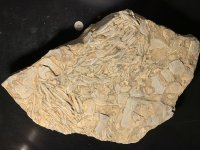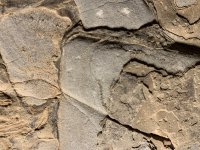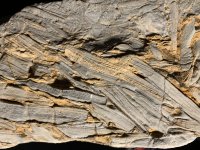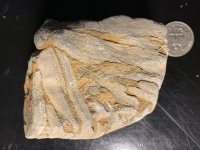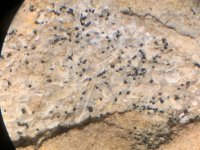Impact Physics
Newbie
- Oct 15, 2020
- 2
- 0
- Primary Interest:
- All Treasure Hunting
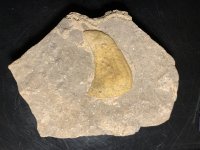
The photo (above) shows a gray sediment sample recovered from a very probable impact-related site involving intense heat and pressure. The gray rock matrix is littered with glassy-black microparticles, presently interpreted as tektites. Multiple melt veins display a common impact-related diagnostic known as shock deformation, involving zig-zag lines interpreted as planar deformation features.
Does anyone have some proper identification for this type of gray rock sample or any theories to further research, as to what the actual gray matrix could be described and labeled as?
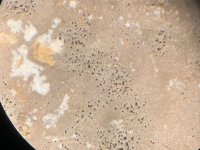
* 20x view showing glassy-black microparticles heavily pitted throughout the gray matrix.
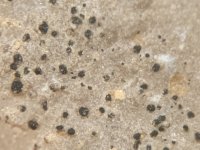
* 60x view showing probable microtektites.
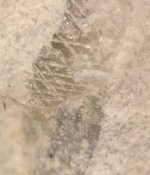
*60x view showing (PDF's) planar deformation features found throughout the sample. Such features are commonly used as diagnostic evidence for impact evidence.
Does anyone have a positive ID for this type of gray rock matrix material?
I would appreciate it and thanks in advance.
- James Tate



